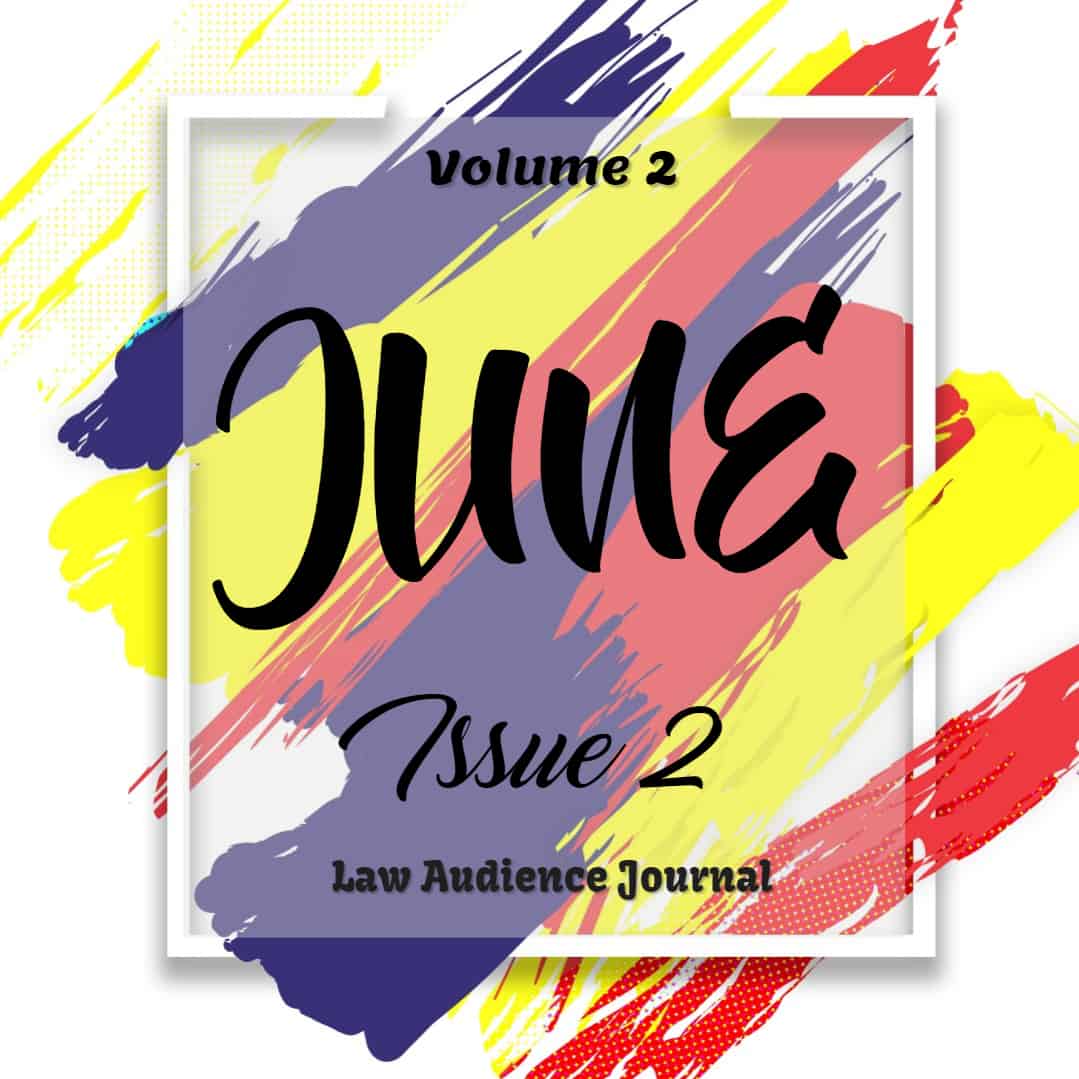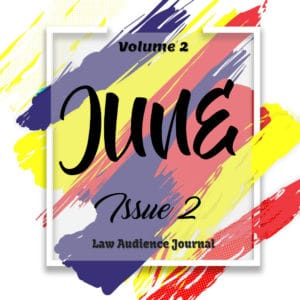AUTHORED BY: MR. SHASWAT MIMANI, CO-AUTHORED BY: MR. YAJUR LATH, NATIONAL LAW UNIVERSITY, JODHPUR.
I. INTRODUCTION:
“The act of beggary has been prevalent in India for time immemorial and often considered as an age-old social phenomenon. Once considered as an acceptable occupation, the nation has been accustomed to seeing mendicants on every street. Begging is believed to be the ‘last resort’ for non-affluent to make a living and according to the most recent census, there are around 4 Lakh beggars who have been registered.[1] A total of 24 percent of the Indian population who face a similar financial crisis has been reported by the World Bank yet only 0.003 percent involves themselves in begging. Beggary not only hampers the growth of the nation but also affects the citizens in ways of nuisance and the physical threat from mendicants. Out of the 4 Lakh mendicants, only 2 percent are physically handicapped but the remaining 98 percent are physically capable of working in a professional workspace or as a laborer. These people resort to begging either because of reluctance to work or because of a lack of knowledge of opportunities.”
II. INDIAN SCENARIO:
One very common scenario almost everyone who has come to India might have seen and remember, a lady in torn clothes with a baby in her hands with a running nose knocking at the window of your car while one has stopped at a traffic light. Some people might be disgusted, some might be generous and give some alms or some might be rude and shout at them. While there are different reactions, one permanent emotion is that of fear. Fear of running over them, fear of getting cursed, fear of them damaging property just to state a few. The question arises that why does fear come in when beggars are the ones who belong to the disadvantaged society. The fear sets in because that part of society has nothing to lose and is considerably large in number.
According to the last census, there are over 4,00,000 beggars in India. It wouldn’t be any surprise if this number increases tenfold in the 2021 census. West Bengal tops the list with 81,000 beggars. Some studies point out that 99% of men and 97% of women resort to beggary.
Begging has been declared a crime in 22 states and 2 union territories. There is no uniform legislation on the topic but all the states have majorly adopted or taken the Bombay Prevention of Begging Act of 1959[2] as it’s basis. [3]
Sr.No. | States/Union Territories States | Legislation in Force |
1. | Andhra Pradesh | The Andhra Pradesh Prevention of Beggary Act, 1977 |
2. | Assam | The Assam Prevention of Begging Act, 1964 |
3. | Bihar | The Bihar Prevention of Begging Act, 1951 |
4. | Chhattisgarh | Adopted the Madhya Pradesh Bikshavirty Nivaran Adhiniyam, 1973 |
5. | Goa | The Goa, Daman & Diu Prevention of Begging Act, 1972 |
6. | Gujarat | Adopted the Bombay Prevention of Begging Act, 1959 |
7. | Haryana | The Haryana Prevention of Begging Act, 1971 |
8. | Himachal Pradesh | The Himachal Pradesh Prevention of Begging Act, 1979 |
9. | Jammu & Kashmir | The J&K Prevention of Begging Act, 1960 |
10. | Jharkhand | Adopted the Bihar Prevention of Begging Act, 1951 |
11. | Karnataka | The Karnataka Prevention of Begging Act, 1975 |
12. | Kerala | The Madras Prevention of Begging Act, 1945, the Travancore Prevention of Begging Act, 1945 and the Cochin Vagrancy Act, 1945 are in force in different areas of the State. |
13. | Madhya Pradesh | The Madhya Pradesh Bikshavirty Nivaran Adhiniyam, 1973 |
14. | Maharashtra | The Bombay Prevention of Begging Act, 1959 |
15. | Punjab | The Punjab Prevention of Begging Act, 1971 |
16. | Sikkim | The Sikkim Prohibition of Beggary Act, 2004 |
17. | Tamil Nadu | The Madras Prevention of Begging Act, 1945 |
18. | Uttar Pradesh | The Uttar Pradesh Prohibition of Begging Act, 1972 |
19. | Uttarakhand | Adopted the Uttar Pradesh Prohibition of Begging Act, 1972 |
20. | West Bengal | The West Bengal Vagrancy Act, 1943 |
21. | Daman & Diu | The Goa, Daman & Diu Prevention of Begging Act, 1972 |
22. | Delhi | Adopted the Bombay Prevention of Begging Act, 1959 |
An unjust law is itself a species of violence. Arrest for its breach is more so.
-Mahatma Gandhi.
Just law is very important. Drafting of an unjust law and application of the same isn’t worthy and is useless as well. Now the foundation act which criminalized begging and allowed the arrest of beggars without any warrant was the Bombay Prevention Act. While the idea behind the Act was good, there were a lot of loopholes and discrepancies which allowed for the Delhi High Court stating it as unconstitutional and unjust.[4] There were a lot of issues regarding the Act. First regarding the definition of beggars. It simply creates no distinction between homeless and beggars and it also gives the police the ultimate authority to arrest a person under this Act whom they deem as beggars and that to without a warrant. Now, of course, the arrest of a random homeless non-beggar would violate his rights and especially when the jail term for begging could range up to 3 years. Moreover, the people who would earn a living through singing and dancing are also prohibited.
Moreover, there is absolutely no mechanism to properly help them lead a good life that is there is no rule with respect to any right to get training and education. While The Person in Destitution (Protection, Care and Rehabilitation) Model Bill, 2016[5], tackled all these issues, it had been dropped by the government.
The only problem in this bill is that it decriminalized begging, which maybe the reason the government dropped it because it cannot be ignored that there are some wrongs committed by beggars. These wrongs might be committed because of the reasons which forced them to turn into beggars but still, they can’t be ignored altogether. Now to understand this properly, one needs to have a social, legal and an ethical perspective.
This perspective was taken by the Supreme Court, in the case of Ram Lakhan[6], where beggars, as per the Bombay Prevention of Begging Act, were divided into 4 different groups, namely;
- Lazy persons who don’t want to work
- Addict to alcoholic or drug
- Forced by a ring leader of a beggary “gang”
- Starving, helpless and hopeless
It further states that the people coming in the 3rd and the 4th category shouldn’t be covered under the beggar definition as they are not working voluntarily and instead are being forced to beg. So while the state imposes or not imposes any kind of punishment, it should be made sure that these people coming in the 3rd and the 4th category shouldn’t be criminalized, and should have the defense available just like people under the Indian Penal Code have. While the Supreme Court decision implicitly declared that the 1959 Act of Bombay legislation was unconstitutional, the first court to do so was the Delhi High Court in 2018 as extended to Delhi. All the provisions which talked about penalizing were struck down by the High Court. Some provisions regarding the begging rackets were not struck down.
It was mainly contended that this Act violates the right to equality[7] and the right to life[8] of the beggars.
III. THE LEGALITY OF CRIMINIALIZATION:
The various decisions which have come against the Bombay Prevention of Begging Act, point that criminalizing begging violates the right to equality and the right to life. What is important to understand is that the provisions, or rather the 25 sections which were struck down the Delhi High Court are an example of bad framing of laws because the idea of the state criminalizing begging is actually supported by the Constitution of India. In this case, just the mechanism and the concept of criminalization needs to be understood in a more holistic and developmental manner. Before coming onto the mechanism of criminalization, it is important to understand that the states undertake these activities under Article 23[9] which states the right to life to be free from exploitation.
This article is incorporated to stop beggary and various other forms of human trafficking. Article 23 (1) to be read along with article 39 (e) and (f) of the Constitution of India which provides for the Directive Principles of State Policy makes and provides for a mandate for the state for protecting persons from exploitation and also against material abandonment.[10] One might argue that begging comes under the freedom of speech and expression[11], however, we need to be mindful that there also exist various exceptions [12] for that very article in the Constitution of India. In fact, there have been a lot of cases where the court itself in the interests of the sovereignty and integrity of India, the security of the State, friendly relations with foreign States, public order, decency or morality or in relation to contempt of court, defamation or incitement to an offence allows restrictions on these rights. There is more weight in criminalization regarding the justification of some exceptions such as public order or decency as the Indian courts themselves have had instances where they have called pavement dwellers a “source of public nuisance” [13] or even compared homeless people with “pickpockets” [14]
Article 14[15] also poses a challenge as the difference between voluntary and involuntary begging can’t stand the test of the above-said article. However, it would be able to if the criminalization is done for repeat offenders with the proper maintenance of All India records. The treatment subjected to first-time offenders wouldn’t be of any sort as offered or suggested by the Bombay Prevention of Begging Act or similar begging acts.
Therefore a just anti-beggary law should be seen as a tool to ensure public safety in public places against unwarranted and unwanted encounters. Now let’s see how these encounters can take place and in different forms, specifically as to why criminalization is required.
IV. MECHANISM OF CRIMINALIZATION:
While we feel that there is a strong need for the criminalization of begging, it shouldn’t be done the same way it was earlier. The Acts which have come by till now criminalizes people and not begging, however, the act of criminalizing begging should not criminalize people and rather criminalize begging. The very act of begging allows the person to commit wrongs, or establish procedures for committing wrongs. These wrongs have been explained in detail above. This can be achieved in various ways along with properly defining terms related to begging. For starters, first-time offenders should let go. Their data including fingerprints should be recorded and a database should be made which is accessible to all the police departments throughout the country in order to hold them liable the second time. Now the Act should also provide them with rehabilitation centres for addicts as well as centres which provide them with vocational training and in return gets government subsidies if not publicly owned. Now along with keeping the different kinds of classifications made in the Supreme Court in mind, the Act should also take care of children and the disabled people who belong to the underprivileged section of the society. These people should accordingly be sent to different centres where they can learn a skill of their competence and ability. This will allow them to learn a skill through which they can be employed. This covers the part where the people who were found begging actually want to learn a skill and want to lead a better life and not asking for alms.
The fact that everyone can’t work and everyone doesn’t want to work is understood, and for that reason, charities should be made where beggars are registered. They shall be allowed to beg on streets or in public places with the exception that there will be no giving/taking of money or any other alms to the person on the street. The person asking will basically be requesting the concerned party to actually go and donate whatever amount he deems fit to the charity and not directly to him. Its objective is threefold; transparency is being sought as the donor would be given a receipt for whatever amount he has donated. Second, this also ensures proper utilization of funds as it is really a concern that whether the money given as alms is being used to sustain oneself or used to buy drugs.
Lastly, whatever money is being submitted, will be equally divided amongst all the registered beggars which again promotes equality and helps them all at once. This system would actually help the beggars as the increased transparency would not withhold people to not donate to the charity in large amounts comparatively. While these institutions help beggars, one has to be careful regarding who has to be enrolled into these type of centres because this has been majorly constructed for the disabled people, the old people who don’t want to go to the old-age care homes and many such other people who would have worked but aren’t able to due to age or any kind of deformity. Campaigns should be undertaken in order to promote individuals donating to charities and not individuals. This idea was demonstrated in England, by the Southampton City Council and has been a huge success. So criminalization should be done for the people who have been sent to either charities or centres for vocational training and even then resort to begging with certain exceptions for the mentally unstable people.
Methods of criminalization are various, and for that begging should be considered a misdemeanour, that is, carry less serious punishments and get the objective of criminalizing begging, deterrence, fulfilled. Methods such as probation, community service, mandatory attendance at counselling sessions and even incarceration in some cases are there which should be decided on a case to case basis. Arrests, unlike the previous Acts, should be warrantable which prevents the picking up of random people.
V. SURVEY (97 RESPONSES):
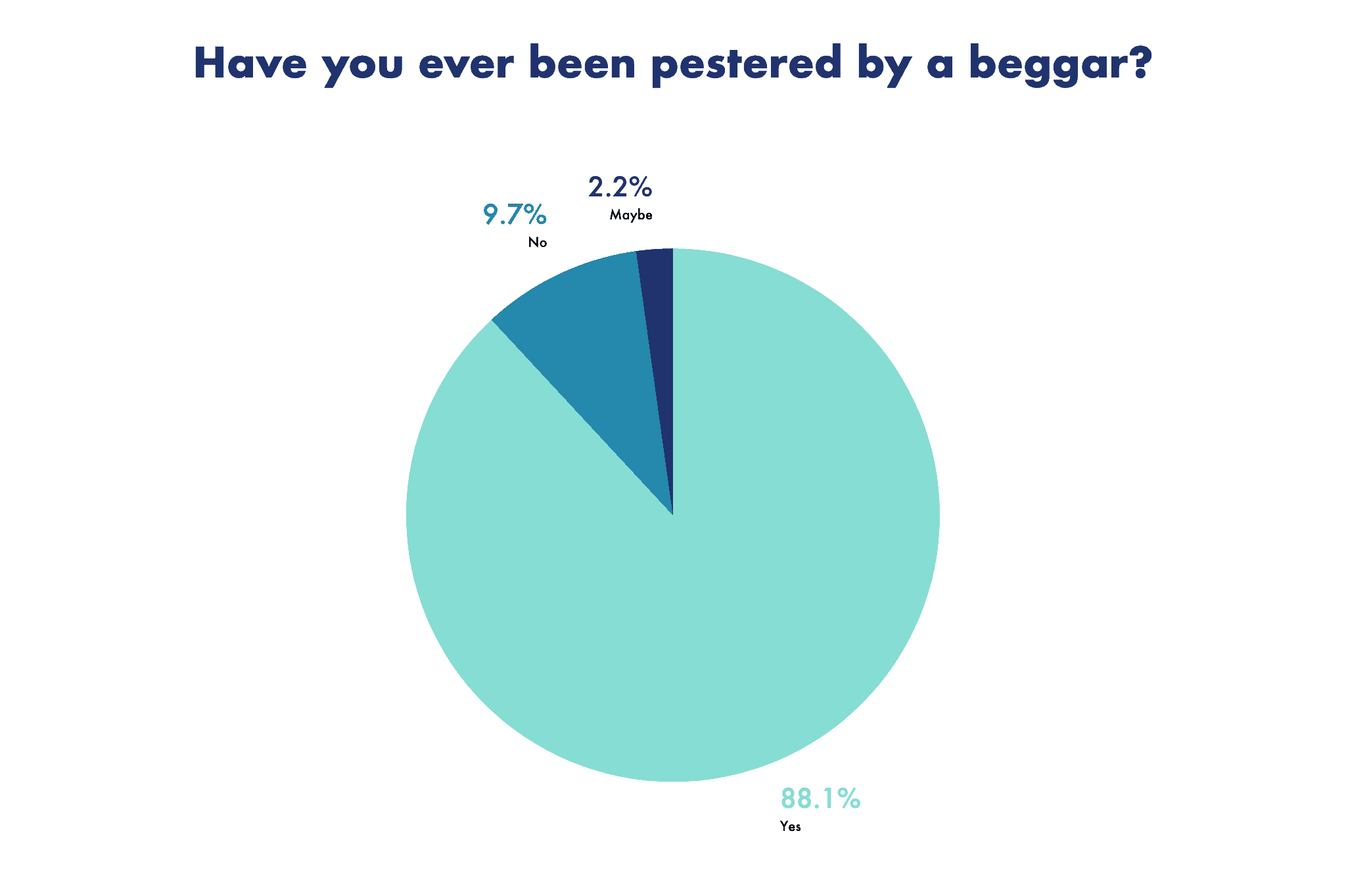
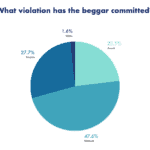
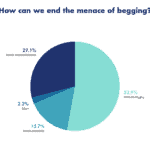
V.I ANALYSIS:
On account of the survey, we were able to infer various perspectives with regard to criminalizing begging. Majority of the sample population have been often pestered by mendicants in their normal day to day routine. Various kinds of torts have been committed by these beggars causing injury or annoyance to the population. Majority of the population has claimed nuisance as the highest committed tort by the beggars followed by trespass and assault.
On questioning the population about the best course of action for stopping the menace of begging, most of the population felt that criminalizing begging and deterring the mendicants is an appropriate solution. On the other hand, the minority opinion of the population felt that the state should either provide sustainability or vocational education to these beggars.
VI. CONCLUSION:
Analyzing the survey and our study, we can conclude that begging is definitely a menace in today’s society wherein the beggars commit different kinds of wrongs such as nuisance, trespass, assault, inflicting emotional distress, forming cartels and engaging children into this act. These wrongs are committed on a regular basis causing a lot of discomfort to the general public.
The common notion of committing a tort is continued with restitution so as to compensate for the aggrieved. The problem arises when these beggars commit a tort but are unable to restitute. The question raised now is whether there should be an alternative towards deterring beggars for the tort and wrongs they have committed.
The possible recourse towards this problem may not be direct imprisonment but a mechanism helping prevents this entire act holistically. As mentioned above, deterrence needs to be combined with extra efforts not only to punish the wrong but to bring a halt to it completely. One may point out that these beggars have a right to life and are constitutionally secured under Article 21 but looking at it with a larger perspective, this article does not only secure the rights of beggars but the entire population. These beggars often resort to unlawful means violating the rights under this article for others.
It is agreed that not all beggars resort to such means but distinguishing passive and aggressive begging is logically not feasible and therefore in order to prevent a greater wrong, formalizing this entire act and creating an ad hoc system for helping out these mendicants indirectly so that the general public isn’t pestered, annoyed or injured.
Concluding this study, we can say that criminalizing may not be an end to this menace but will definitely act as a stepping stone towards making India great again.
[1] Census of India of 2011.
[2] Bombay Prevention of Begging Act, 1959.
[3] http://socialjustice.nic.in/UserView/index?mid=47564.
[4] Harsh Mander and Anrs. v. Union of India, CM APPL. 1837/2010.
[5] The Person in Destitution Model Bill, 2016.
[6] Ram Lakhan v. State 137 (2007) DLT 173.
[7] Article 14 of the Constitution of India.
[8]Article 21 of the Constitution of India.
[9] Article 23 of the Constitution of India.
[10] Narendra Kumar, Constitutional Law of India, (Allahabad Law Agency, 2015) 407.
[11] Article 19 (1)(a) of the Constitution of India.
[12] Article 19 (2) of the Constitution of India.
[13] Olga Tellis v. Bombay Municipal Corp., 1986 AIR 180.
[14] Almitra Patel v. Union of India, JT 1999 (10) SC 332.
[15] Article 14 of the Indian Constitution.
